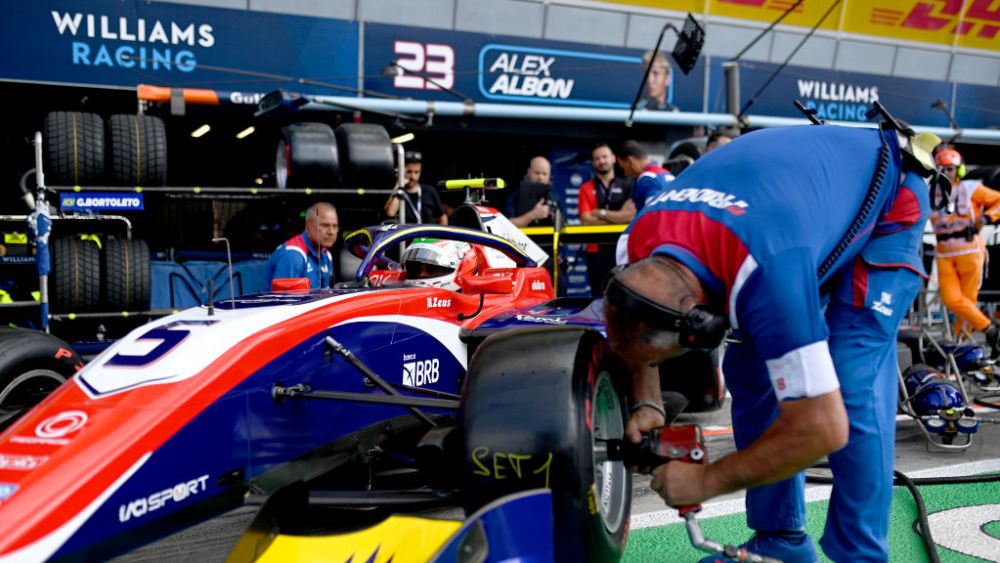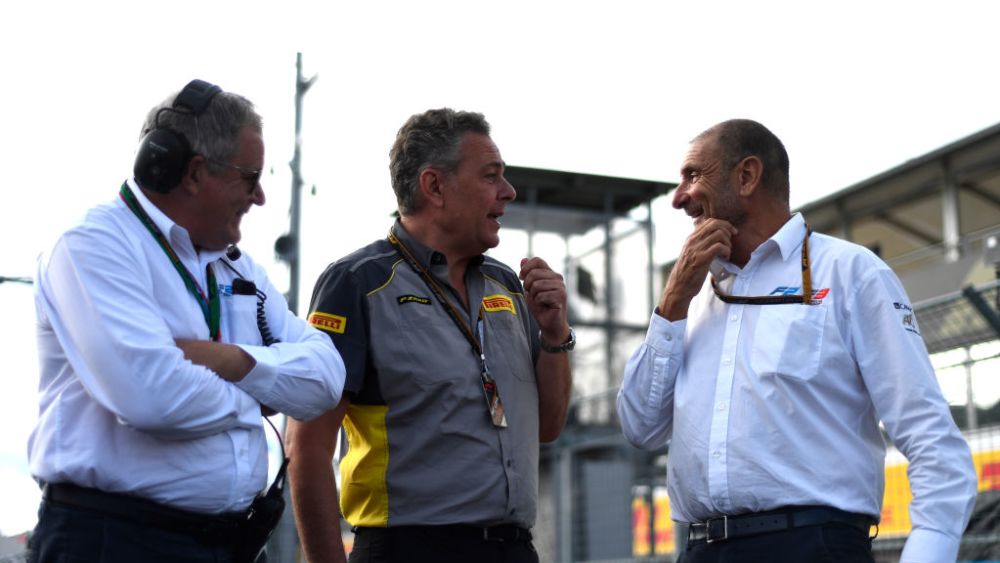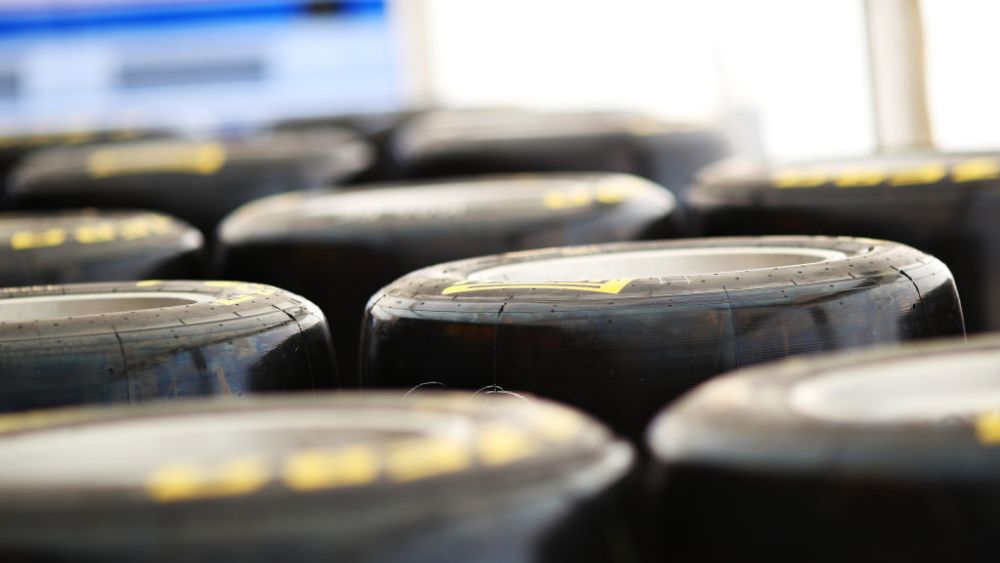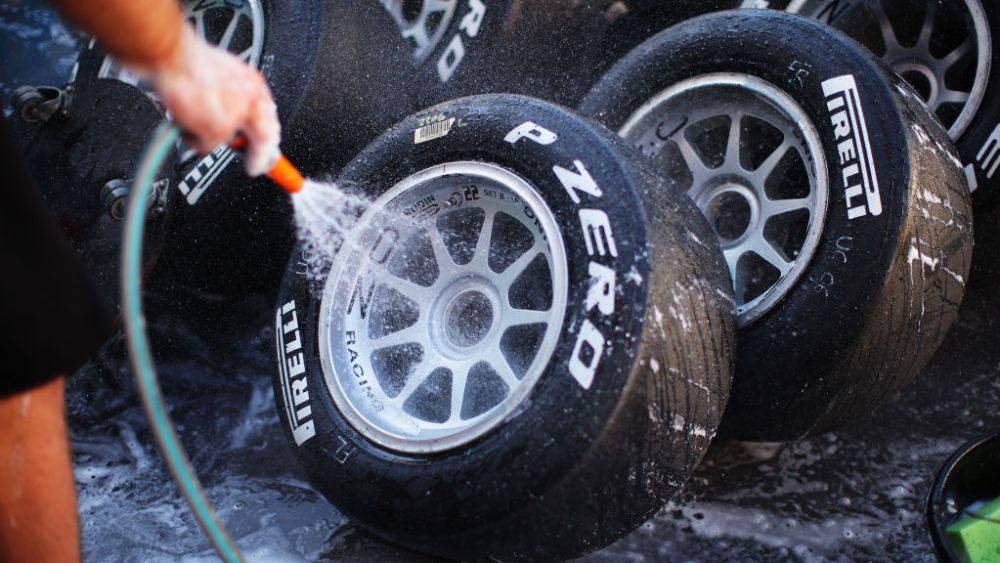Interview
‘We are preparing young drivers for F1‘: Pirelli on 2023 season and future of F3 tyre supply

Working with the FIA Formula 2 and 3 Championships, Pirelli produces tyres that are the first introduction for talented young drivers rising through the ranks to F1-centric design philosophy.
With tyres that are designed to degrade, drivers are forced to learn tyre management skills that become even more crucial the further up the FIA pyramid they go. In essence, Formula 3 is an introductory school aimed at sharpening driver traits that are integral to Formula 1.
As tyre provider, Pirelli aims to accentuate F1 tyre traits and accelerate that learning process, as the Italian manufacturer’s Motorsport Director, Mario Isola explains.
“The best product means a product that teaches the young drivers how to manage the tyres because that’s what they have to do in other Championships,” Isola says. “Formula 3 is the first step of the pyramid after the lower series, and it’s the first real professional Championship that drivers face. In F3 they have three in the range but only have one compound on a race weekend, so they have to get used to it.
“That means that their job is slightly easier compared to Formula 2 for example, where they have two compounds - an option and a prime, but they still have to understand how to manage each compound because of the degradation. We want to introduce that in order to give them an additional challenge.
“It’s the same product that’s available to everyone, but it’s the way you manage the product that becomes a performance differentiator compared to the other drivers. I believe we have achieved that target, even if we have to make some fine tuning, but that’s something that happens every year.”

Having produced tyres for the second and third tiers of single seater racing dating back to their taking over as F1 Global Tyre Partner in 2011, Pirelli has been a cornerstone of the FIA F3 Championship since the inaugural campaign in 2019.
Since then, there has been a great deal of development and 2023 was no exception. A new medium compound tyre was developed for the most recent campaign and while the goal is to have tyres that degrade, the levels seen in Budapest in particular were not what had been envisaged.
Isola says that Pirelli is already well down the redevelopment path for their yellow-walled tyres, as well as preparing to introduce new hard tyres for 2024.
“Last year (2022), the medium compound was not degrading at the level expected and so we decided to develop a new compound with higher degradation, which we did. If I had to make a final judgement on the season, I would say that, in this case, we are now on the other side a bit too much and the tyre degrades a bit too much.
“As soon as we collected the data from the track, in this case, we realised the degradation was too high compared to the expected levels. We immediately made a test plan together with the promoter and the FIA in order to have the possibility to test a new compound on track before any introduction to the Championship.
“We’re working on a new hard and new medium to fine tune the compounds in order to have them in the proper positions in the range. We are fine tuning each compound and the plan is to have two new compounds next year.”
That process of development begins well before tyres are fitted to F3 cars and used in anger at racetracks around the world.

Pirelli laboratories run several potential compounds which are analysed extensively in order to determine which are most promising. Those tyres are then developed further and brought to the circuit to test before a final decision is reached by the promoters and governing body.
“The first development steps are in the laboratories. We prepare the new compound and have some indoor tests in the lab to understand if the new compounds are in line with our expectations. The most promising compounds we test at the track on a real Formula 3 car in proper representative conditions.
“We use a professional driver not involved in the Championship in order to not give an advantage to anyone, another important element to ensure sporting integrity. We have support of the promoter with the development car.
READ MORE: Spielberg Rewind: O’Sullivan wins out after Red Bull Ring thrills and spills
“We have the data from the track, we analyse it and try to understand how to improve our product. We share our considerations with the promoter to come to an agreed conclusion. It’s a process that works quite well and one that we’ve started with from the beginning. I believe that the success of the Championship is all the confirmation that we need that we’re working in the right direction.”
Further changes are on the horizon, with the introduction of new hard and medium tyres in 2024 and beyond. The large-scale changes in Formula 1 are often a pivotal factor for Pirelli in what they bring to Formula 2 and 3 in terms of tyres.
Changes in 2026 are fast approaching but the analysis and planning for what comes next in F3 is already under consideration, as is the case for any major changes for F1. Isola says that Pirelli aims to pre-empt those new developments by introducing tyres that give drivers a headstart in adapting to new changes further up the pyramid.

“We always want to anticipate what is going to happen in Formula 1 and so understand in advance the future direction of F1 and reflect this. We’ve done this in the past, for example the 18-inch tyres for Formula 2. We have to anticipate the introduction of a new type of tyre in Formula 1 by a year in Formula 2 and Formula 3.
“We are monitoring what is going to happen in Formula 1 for 2026, it’s no secret that they’re going to introduce a completely new car and they are talking about the possibility of having a new tyre size. If it’s necessary, we are ready to react and to develop a tyre with different characteristics in 2024 or 2025.
“We need to anticipate any change and the introduction of a new tyre for the future is to get the drivers used to the product. In general, this is the approach we have taken for the past few years. If we had information that something was going to change in Formula 1, we had to anticipate those changes.”
READ MORE: Gabriel Bortoleto: The road to Formula 3 title glory
Not only is Pirelli developing tyres to better prepare drivers for Formula 1 on track, but they are also partly subsidising the careers of Formula 3 Champions off it too.
Robert Shwartzman, Oscar Piastri, Dennis Hauger, Victor Martins have received additional funding directly from Pirelli in order to further their racing careers in Formula 2. It’s a huge point of pride for the company says Isola.
“It’s a prize we give to the Formula 3 Champion, if they want to compete in Formula 2 the following year. It will be the case again for Gabriel Bortoleto if he graduates to F2. It’s a help that Pirelli wants to give. We know how expensive motorsport is and sometimes we have talents that aren’t able to progress simply because they don’t have the money to progress.

“We have several projects with National ASNs to try and help the drivers, tyres free of charge or some supporting cash. The prize for Formula 3 is one of the most important, €300,000 is quite a good help. I believe that’s quite a good support for the driver who wants to race in Formula 2.”
It was announced that Pirelli will continue to be Global Tyre Partner of Formula 1 through to 2027 and potentially beyond, an agreement that englobed both F2 and F3.
The racing DNA of both Championships have been enhanced by developments by Pirelli and tyres that have drivers sharpening their skills. For Isola, it has been a design philosophy that creates great racing and one that will continue to shape the future of the Pirelli offering going forward.
“I believe that the two elements go together. If you make a tyre that’s not easy to drive, then you see who the best drivers are, and it makes for good racing because you have a lot of action on track. In Formula 3, all of the cars are the same so the action happens in a natural way I would say. But, on top of that, if we provide a tyre for example with an evolution towards promoting oversteer, that is a bit more difficult to manage.
“In that case, there’s good racing and the degradation is helping with that because some drivers will be able to manage the tyre in a better way so that in the last few laps, they still have some tyre life left and others will struggle more because they pushed too much and that means we see some races decided on the last lap.”